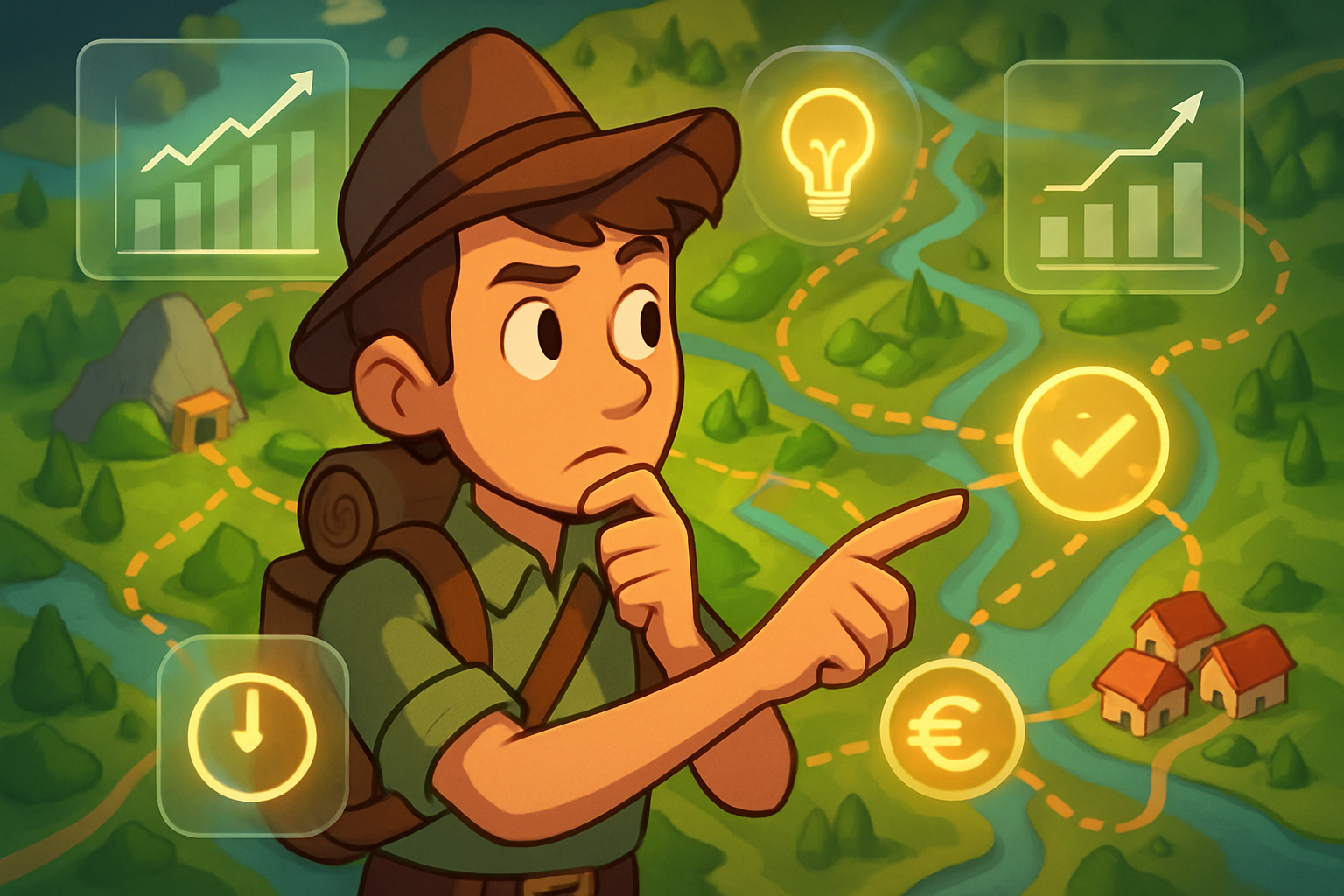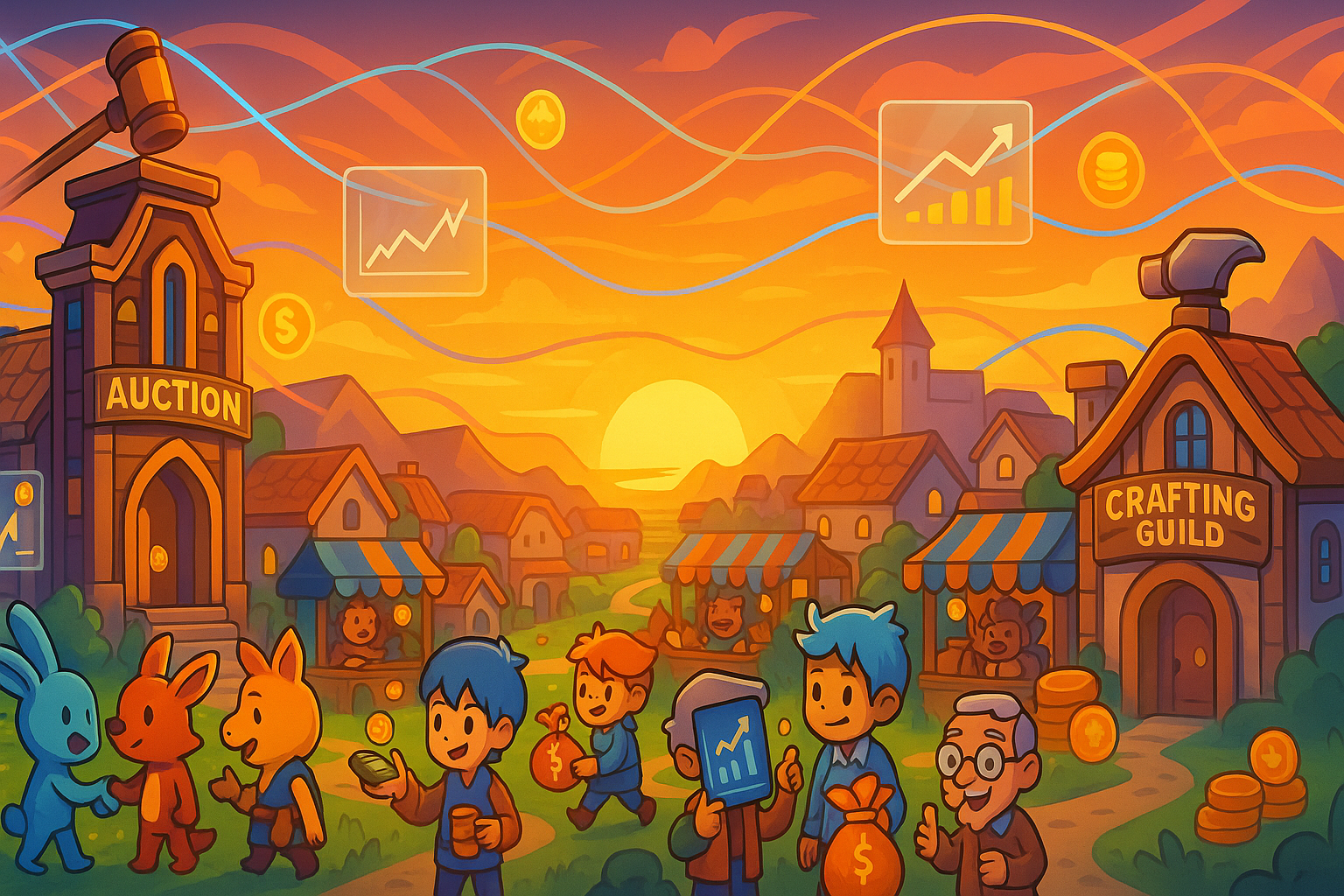Understanding In-Game Economies: A Beginner's Introduction
Ever wondered why that rare sword in your favorite RPG costs so much, or why a certain crafting material suddenly became dirt cheap? You're not just playing a game; you're participating in a complex, dynamic system known as an in-game economy. Far from being simple digital playgrounds, many modern video games, especially online multiplayer ones, simulate real-world economic principles. Understanding these economies isn't just for hardcore number crunchers; it's a vital skill that can enhance your gameplay, save you countless hours of grinding, and even turn a profit within the digital realm.
This guide will demystify the core concepts of in-game economies, breaking down how they work, why they matter, and what role you play within them. Whether you're a casual adventurer or an aspiring digital mogul, grasping these fundamentals will give you a significant edge.
The Pillars of Any In-Game Economy: Currency, Resources, and Items
At its heart, any economy, digital or real, relies on a few fundamental components.
- Currency: This is the medium of exchange. Most games have a primary currency – think Gold in World of Warcraft, Bells in Animal Crossing, or Credits in Star Citizen. This currency is earned through quests, selling items to NPCs, or trading with other players. Some games also feature secondary currencies, often tied to specific activities or factions, like reputation tokens or unique crafting materials that double as trade goods.
- Resources: These are the raw materials needed to create other things. Wood, ore, herbs, magic dust – resources are gathered from the game world, often through professions like mining, logging, or harvesting. Their value is directly tied to their utility in crafting and the effort required to obtain them.
- Items: This is the vast category of goods that are crafted, dropped by enemies, or sold by vendors. Items can be equipment (weapons, armor), consumables (potions, food), crafting components, or cosmetic enhancements. The value of an item is influenced by its rarity, power, utility, and desirability.
Types of In-Game Economies: From Controlled to Chaotic
Not all game economies are created equal. They generally fall into a few broad categories:
- Closed/NPC-Driven Economies: In these games, the primary source and sink for currency and items are Non-Player Characters (NPCs). Think of single-player RPGs where you sell loot to a vendor and buy new gear from another. Player interaction is minimal or non-existent in terms of market dynamics. Prices are typically fixed, and the economy is largely immune to player manipulation. Supply is infinite (vendors always restock), and demand is artificial (players buying what they need).
- Open/Player-Driven Economies: This is where things get really interesting. In massively multiplayer online (MMO) games like EVE Online or Old School RuneScape, players are the primary drivers of supply and demand. Players gather resources, craft items, trade with each other, and set prices on auction houses or direct player-to-player exchanges. The game developers provide the systems, but the market's ebb and flow are dictated by player actions, leading to complex and often unpredictable market fluctuations. This is where real-world economic principles truly shine.
- Hybrid Economies: Many games blend elements of both. They might have NPC vendors for basic goods and services, but also a robust player-driven market for rare or high-end items. For example, a game might have a cash shop where players can buy cosmetic items or convenience boosters with real money (often converted into a premium in-game currency), existing alongside a player-to-player trading system for gear found within the game.

Core Economic Principles at Play
Understanding these concepts is key to navigating any player-driven economy:
- Supply and Demand: This is the bedrock.
- Supply: How much of an item or resource is available. If many players are farming a certain rare material, its supply increases.
- Demand: How many players want that item or resource. If a new powerful crafting recipe is introduced, the demand for its components skyrockets.
- The Intersection: When demand exceeds supply, prices tend to rise. When supply exceeds demand, prices fall. It's a constant dance.
- Scarcity: The rarer an item, the more valuable it tends to be. This can be due to low drop rates, difficult acquisition methods, or limited availability. A legendary item that only drops from the hardest raid boss once a week will naturally command a higher price than common crafting components.
- Inflation and Deflation:
- Inflation: When the general price level of goods and services rises, and the purchasing power of currency falls. In-game, this often happens when too much currency is generated (e.g., easy quests, endless NPC farming opportunities) without sufficient "currency sinks" (e.g., repair costs, expensive vendor items, taxes).
- Deflation: The opposite – prices fall, and currency's purchasing power increases. This is less common but can occur if currency is too difficult to obtain or if too many currency sinks exist relative to its generation. Game developers constantly tweak economies to prevent hyperinflation or severe deflation, which can devalue player efforts.
- Value (Intrinsic vs. Perceived):
- Intrinsic Value: An item's value based on its utility or the resources/effort required to create it. A powerful weapon has high intrinsic value because it helps you defeat enemies more efficiently.
- Perceived Value: An item's value based on what players are willing to pay for it, often influenced by aesthetics, prestige, or hype. A rare cosmetic skin might have no intrinsic gameplay value but fetches a high price due to its desirability and status.

Monetization Models and Their Economic Impact
The way a game makes money significantly impacts its internal economy.
- Free-to-Play (F2P) with Microtransactions: Many popular games are free to download but rely on in-game purchases. These "cash shops" often sell:
- Cosmetics: Skins, emotes, pets that don't affect gameplay but offer personalization. These often create their own mini-economies of rarity and desirability.
- Convenience Items: XP boosts, extra inventory slots, teleports. These can indirectly affect the economy by accelerating resource gathering or reducing travel time, potentially increasing the supply of certain goods.
- Battle Passes: Seasonal progression systems offering rewards, both cosmetic and sometimes minor gameplay advantages, upon completion of challenges.
- Loot Boxes/Gacha Mechanics: These random reward systems can introduce rare items into the economy, but their randomness can also be controversial.
- Subscription Models: Games like World of Warcraft or Final Fantasy XIV require a monthly fee. Their economies tend to be more insulated from real-money purchases directly impacting in-game markets, focusing more on player-driven supply and demand. However, some subscriptions include premium currencies or items, or allow for "token" purchases (e.g., WoW Token) which bridge real money and in-game gold.
- Play-to-Earn (P2E) and NFTs (A Note on Emerging Trends): While still a niche and evolving space, some games integrate blockchain technology, allowing players to truly "own" digital assets as Non-Fungible Tokens (NFTs). These assets can theoretically be bought, sold, and traded on external marketplaces for real-world cryptocurrency. The economic model here blurs the line between in-game and real-world economies entirely. While the hype has cooled significantly, and many initial P2E models faced sustainability challenges, the core idea of true digital ownership and interoperability continues to be explored. For beginners, it's important to understand this is a complex, high-risk, and rapidly changing area distinct from traditional in-game economies.

Your Role in the Economy: Producer, Consumer, or Merchant?
Every player, whether they realize it or not, participates in the game's economy.
- Producers: These are the gatherers and crafters. They spend time collecting resources (mining, skinning, farming) and then combine them to create new items (weaponsmithing, alchemy, cooking). Producers are the source of supply for many goods.
- Consumers: The most common role. Consumers purchase items from vendors or other players to enhance their character, progress through the game, or simply for cosmetic appeal. They drive demand.
- Traders/Merchants: These players specialize in buying low and selling high. They might monitor auction houses for undervalued goods, exploit price differences between different regions, or corner the market on specific items. They act as intermediaries, facilitating exchange and often providing liquidity.
- Speculators: A more advanced role, speculators try to predict future market trends. They might buy up a large quantity of a resource today, expecting its demand (and price) to rise with a future game update, and then sell it for a profit later. This requires deep market knowledge and risk assessment.
Most players will take on a mix of these roles throughout their gameplay experience. You might gather resources (producer) for a while, then sell them to buy new gear (consumer), and occasionally dabble in trading to earn extra currency.
Why Understanding In-Game Economies Matters
Beyond just accumulating digital wealth, a grasp of in-game economics offers several benefits:
- Strategic Advantage: Knowing which items are valuable, when to buy, and when to sell can give you an edge. You can gear up faster, acquire rare mounts, or save up for that coveted end-game item without endless grinding.
- Time Efficiency: Instead of spending hours farming a low-value resource, you might realize it's more efficient to farm a high-value resource and sell it to buy what you need. Or, you might learn to craft specific items that are in high demand, turning your time into profitable ventures.
- Enhanced Enjoyment: For many, the meta-game of understanding and manipulating an economy is as fun as the combat or questing. It adds another layer of depth and strategy to the game world.
- Community Engagement: Trading and economic interaction often foster stronger player communities and social dynamics.

The Ever-Evolving Digital Market
In-game economies are living, breathing systems. Game developers constantly introduce new content, adjust drop rates, nerf or buff items, and add new currency sinks or sources. These changes ripple through the economy, shifting supply and demand, and creating new opportunities or challenges. A good economic player stays informed about patch notes and community discussions, anticipating these shifts.
Conclusion
From the simple gold exchange with an NPC to the intricate, player-driven markets of sprawling MMOs, in-game economies are a fascinating aspect of modern gaming. They mirror real-world principles of supply and demand, scarcity, and value, but within a controlled, digital environment. By understanding these fundamentals, you unlock a deeper layer of gameplay, gain strategic advantages, and ultimately, enhance your overall enjoyment of the virtual worlds you inhabit. So next time you log in, take a moment to look beyond the quest markers and consider the bustling marketplace – you might just discover your inner digital economist!


